A Home Owner’s Guide for Beautiful, Safe and Healthy Trees
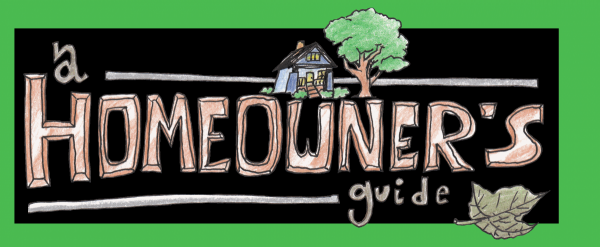
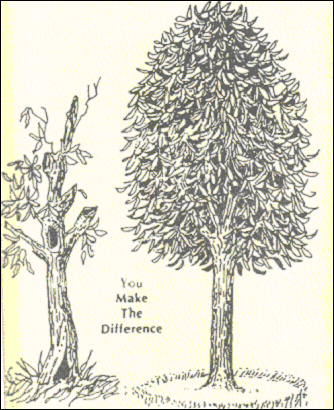 Introduction
Introduction
This homeowners guide to public shade trees des?cribes the duties and responsibilities of the Tree War?den, State Laws, local policy, and provides guidelines for the planting, care and management of public shade trees in Sturbridge.
This brochure was printed with funds supplied from the hotel-motel tax thru the Betterment Committee.
Some of the material and drawings were provided with permission from the National Arbor Day Foun?dation, U.S. Dept. of Agriculture Forest Service, the MA Cooperative Extension Service, Univ. of MA Shade Tree Labs, Amherst and the Massachusetts Tree Wardens and Foresters Association.
"We have met the enemy; and he is us!" -Pogo
Tree and Shrub Planting
Many street layouts in Sturbridge are 50' or less, wide. This presents certain restrictions when plant?ing in the right-of-way. All plantings within a public right-of-way are regulated by the Tree Warden. Generally, no shrubs are allowed. The following trees are prohibited because of their growth charac?teristics: Aspen, Poplar, White Pine, Hemlock, Black Cherry, Gray Birch, Willow and Catalpa.
Those trees not listed are generally accepted street trees and may be planted, but remember planting on town layouts are public property and require the approval of the Tree Warden.
Planting and care
In general, it will be more satisfactory to engage a nurseryman or a rborist to do the planting. If the pro?perty owner does the planting you should familiarize yourself with the requirements for suc?cessful transplant of trees.
Proper watering is extremely important for trees the first three years following transplanting. During dry periods add enough water to soak the soil to root depth once a week. Use caution as transplanted trees can be over watered if the soil is heavy and drains poorly. A mulch of peat moss, or wood chips applied to the soil around the tree will help conserve moisture. Fertilizer should not be applied for two years and herbicides, especially in lawn areas, should not be used for at least three years.
Some Do's and Dont's on Planting
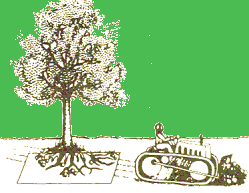 DO PLANT TREES
DO PLANT TREES
- at least 6' from paved areas.
- at least 10' from underground utilities, septic tanks, leach field, and buildings
- at least 30' from other established trees, or allow for sufficient growing space.
- at least 15' horizontally from overhead powerlines (20' is better).
DONT PLANT TREES
- under electric lines unless it is a small tree (flowering crab, arborvitea or cedar) which will grow no higher than 15' or can be well trimmed.
- on Town property or street rights of way without permission of the Tree Warden, THIS IS A STATE LAW!
Extensive cutting of a tree's roots by (arth-moving equipment during construc-ion. Area in box is shown as though soil /ere removed, to illustrate the magnitude if injury below ground
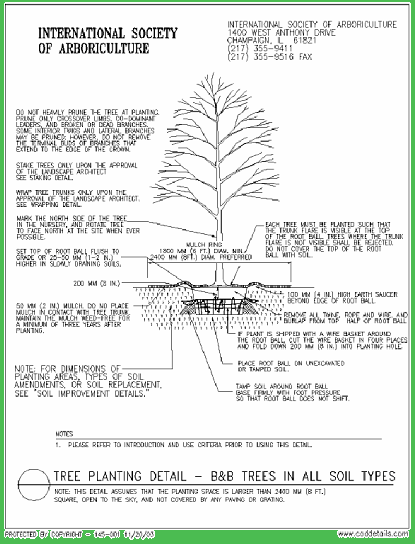 Steps for Planting your Tree
Steps for Planting your Tree
Step 1 Site location and preparation: Choose a proper site for the type tree you want to plant. Dig a hole just as deep as the root ball and 2 to 3 times the diameter of the ball. If soil is "pure" sand, or hardpan, soil amendments are needed.
Step 2 Placement of tree in hole: Set tree so it stands at the same height it did at the nursery. Remove burlap, wire or plastic basket and spread roots in a natural position.
Step 3 Filling around tree: Place soil back around tree in layers tamping and watering as soil is added. Leave a depression around tree to collect water and fill with wood chips or mulch to conserve water.
Step 4 Stakes: Tree stakes are needed ONLY if root-ball is greatly loosened, or very small in comparision to the tree. MOST trees do not need staking.
Step 5 Mulch: Keep the planting hole area covered with mulch, 4-6" thick except at the trunk where 2" is sufficient. This will help keep the weeds down, and prevent lawnmowers and string trim?mers from damaging the trunk..
Step 6 Water: Water the tree every other week with 10 to 15 gallons of water for the first growing season (June thru Sept.) This is in addition to any rain?fall. Water should be poured into the planting hole by pail. Water at least twice a month from June thru Sept. for the next 2 years.
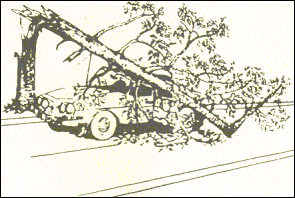 Living Hazardous Trees
Living Hazardous Trees
Most people know that a dead tree should be removed as soon as possible, but few people realize that many living trees can be a threat to life and pro?perty. A living hazard tree is any tree that is struc?turally weakened so that all or part of it, are likely to fall. We usually become aware of such trees only after some major limb, or the whole tree has fallen, often after high winds or a snow and ice storm. When this happens we think of them as unpreventable accidents. In most cases this can be prevented. Homeowners should be concerned about proper tree health, and remember the following:
How to have healthy trees;
- follow proper planting procedures
- prune when necessary (initially when tree is planted, then every 10 to 15 years)
- prevent unnecessary wounding of the tree trunk from lawn mowers, string trimmers, nails, and vehicles.
- prevent root injury/soil compaction: home construction, filling around tree, digging into roots, and driving/parking vehicles near trees
- damages the root zone.
- use lawn and garden chemicals sparingly, read labels carefully and obey all label rules and precautions
- water during dry period as tree matures
- consult with a trained arborist at the first signs of any tree decline - an ounce of protection is worth a pound of cure.
Why Utilities Trim Around Electric Lines
To put it simply, utilities trim in order to maintain the integrity and reliability of the electric system, however, to accomplish this goal it becomes more complex.
The most obvious reason for electric line trimming is to try to prevent storm related failures due to hurricanes, ice storms, heavy snow loading, etc. Beyond that, proper clearances must be maintained to minimize the trees contact with electric conduc?tors. Such contact may result in burning of both the tree and the wire.
The utility companies employ an arborist to oversee line trimming operations. This arborist is required to obtain approval from the Tree Warden BEFORE pruning or tree removals take place
Remember - trees, limbs and wires downed in storms may pose a serious threat of electrical shock.
Trimming or pruning on any public shade tree must be approved by the Tree Warden. This is a State Law! If you observe any street tree trimming work and have questions, contact the Tree Warden immediately.
History of Tree Wardens
Tree Wardens in Massachusetts had their beginning in 1 899 when the State Legislature passed a law rela?tive to the position of trees. The law established the position of Tree Warden and empowered them to protect, plant, cut and trim public shade trees along with exterminating insect pests, and to prescribe regulations for the care and preservation of trees.
Tree Warden Today
Currently the Tree Warden operates under MA General Laws Chapter 87, Shade Trees. The Town appropriates monies from taxes and the hotel/motel tax to implement the following programs:
Dead and hazardous tree removal Street tree maintenance Public land tree maintenance Tree planting/Seedlings Insect pest control Education and Arbor day activities
The Tree Warden works closely with the Public Works director in the areas of road reconstruction and driveway permits. With the Planning Board on site plan permits, and the Board of Health at the recycl?ing center.
If you have any questions concerning this brochure or the programs mentioned above contact the Town Administrator's office who will give you the name of the current Tree Warden.
TREE CITY USA
Sturbridge has been awarded the TREE CITY USA designation by the National Arbor Day Foundation annually from 1 989. Sturbridge is only one of about 25 other cities and towns in Massachusetts to be so recognized for its programs on tree planting and care.

